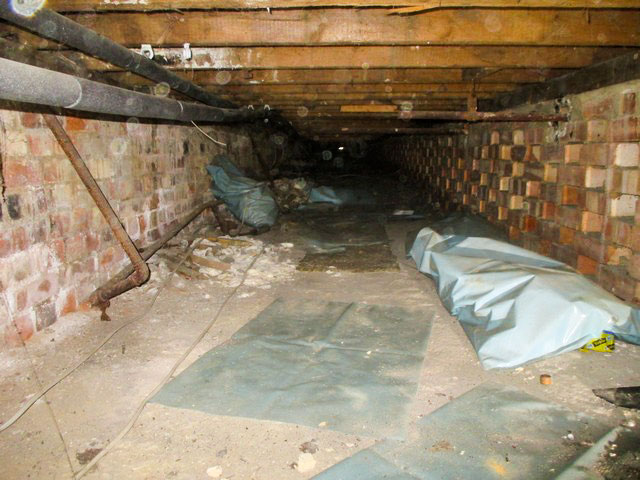Merryhill was recently asked to look at an asbestos removal project in Surrey where ACMs had been discovered in a floor void. The contaminated area required all the asbestos to be removed prior to additional service pipes being run by other contractors.
Upon viewing the detailed asbestos refurbishment survey carried out by our surveying division (MATAC), Merryhill was successful in securing the project to remove asbestos pipe lagging and other asbestos residues.

Totalling an area of 150m2, this was only part of a much larger floor void that was also contaminated with asbestos, but outside of the project scope.
Prior to commencing work, our asbestos removal team had to seal the area above floor level to create the working enclosure. Once this had been built, then the necessary floor boards were removed in order to access the floor void below. Once the necessary floorboards were removed, the team incorporated the working area into the enclosure, sealing it from the rest of the floor void with 1000 gauge polythene.

Once the working area had been constructed and sealed, the team then carried out the asbestos removal and environmental cleaning of the contaminated area. All pipe lagging was removed using the SafeStrip RedBox injection system. All loose debris was sprayed with a water surfactant and either vacuumed using H-Class machines or placed directly into appropriate waste bags and sealed. As there were a number of disused pipes and other construction debris within the floor void, this was also disposed of as contaminated waste.
As the remainder of the floor void was to remain untouched, a semi-permanent barrier was constructed using 1000 gauge polythene and Corex. This barrier was installed to ensure the cleaned area did not become contaminated once again by the remaining floor void. As part of the clients’ asbestos management plan, the sealed area of cleaned floor void will be tested on an annual basis to ensure a tight seal remains. If future works are to take place within the floor void, then the client can be assured the cleaned area will not require re-visiting.
This staged approach to having asbestos removed from larger areas can be an affordable option to some clients, especially if the remaining materials are in a good condition and pose a low risk. In this case, it is the intention of the client to have the remaining areas completed at a later date.




